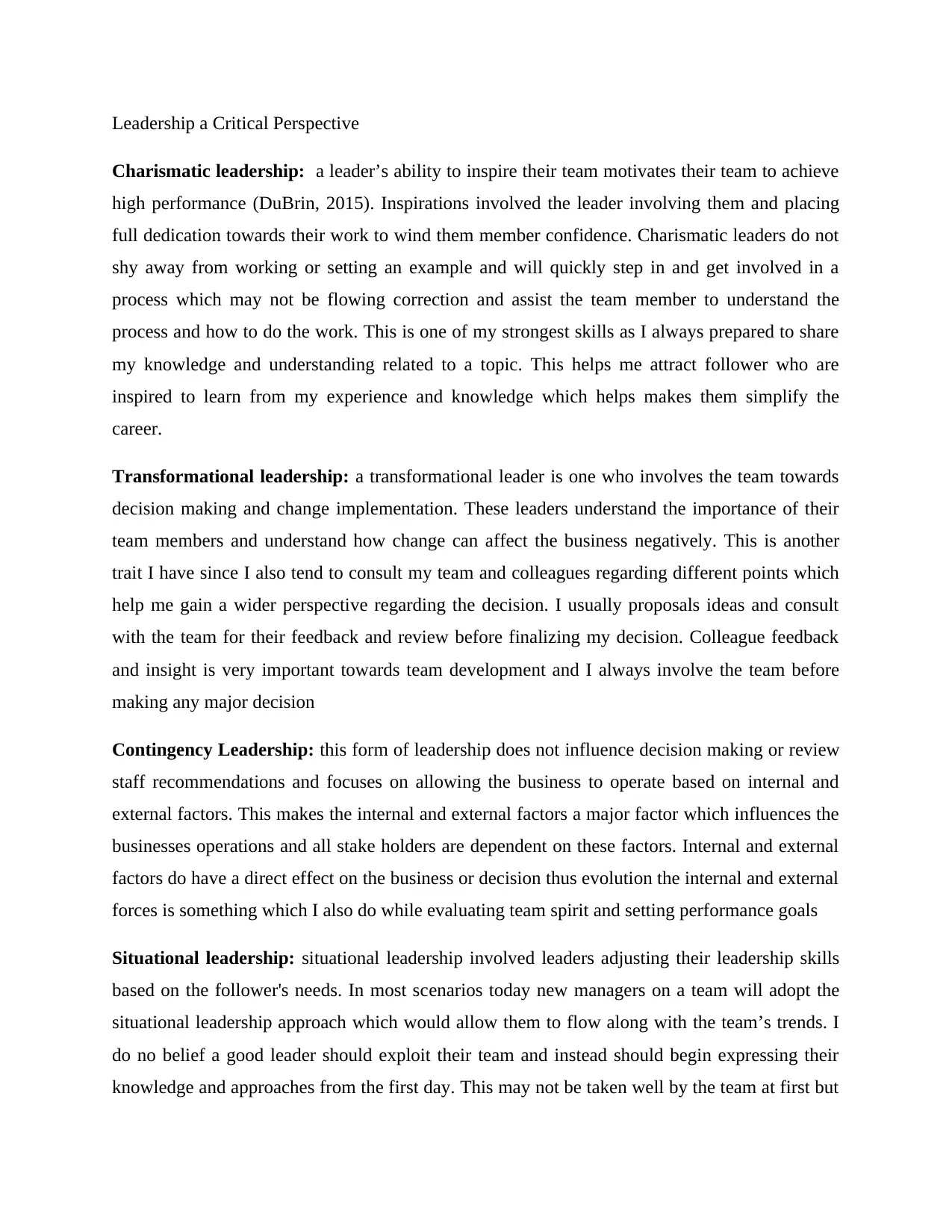Leadership: Skills, Approaches, and Team Management
VerifiedAdded on 2020/03/04
|2
|481
|55
Report
AI Summary
This report provides an analysis of various leadership styles, focusing on charismatic, transformational, and situational leadership. It explores the core characteristics of each style, such as how charismatic leaders inspire teams, transformational leaders involve teams in decision-making, and situational leaders adapt their approach based on follower needs. The report highlights the importance of these different approaches in team management and decision-making processes. The author, reflecting on their own skills, emphasizes their ability to share knowledge, involve teams in decision-making, and adapt leadership styles to meet the needs of the team. The report draws on academic resources to support its claims and provides a comprehensive overview of the subject, making it valuable for students studying leadership and management.
1 out of 2







![[object Object]](/_next/static/media/star-bottom.7253800d.svg)